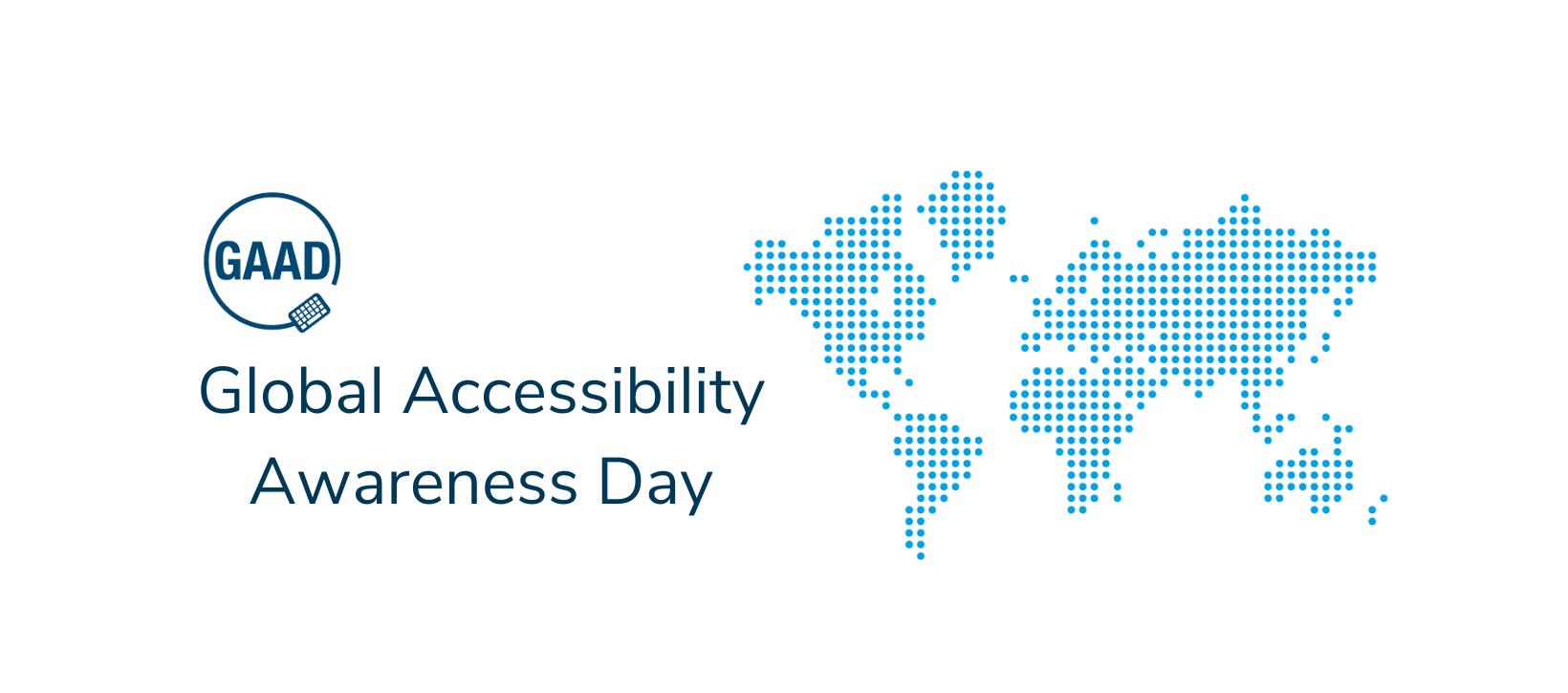How accessible is your digital content? If you haven’t wondered that in a while, it’s the perfect time to check into it because Global Accessibility Awareness Day (GAAD) is coming up on May 18. Global Accessibility Awareness Day is an annual event to raise awareness about the importance of digital accessibility and to promote the inclusion of people with disabilities in the digital world. It’s a great opportunity to remind ourselves of the importance of building accessibility into our digital spaces every day.
Why is Digital Accessibility Important?
Digital accessibility means that everyone, including people with disabilities, can not only access, but also use digital content. People with disabilities often face barriers when trying to access websites, apps, and other digital content. These barriers can pose significant difficulty when it comes to participating in everyday activities that others take for granted, such as ordering food online or sharing on social media. A lack of digital accessibility also can limit people with disabilities in the workplace, in the classroom, and in communities as well.
In addition to the ethical and moral reasons for making digital content accessible, there are also legal requirements. In the United States, the Americans with Disabilities Act (ADA) requires that businesses and organizations make their websites and digital content accessible to people with disabilities.
Web Accessibility Guidelines
Last year, the Justice Department issued new web accessibility guidance under the ADA. The guidance clarifies that the ADA applies to websites, apps, and other digital content, and that businesses and organizations are required to make their digital content accessible to people with disabilities. The guidance also provides a framework for assessing whether digital content is accessible, and outlines steps that businesses and organizations can take to make their digital content accessible.
Some of the key steps outlined in the guidance include:
- Using alt text for images and other non-text content.
- Using headings to organize content.
- Providing closed captions and/or transcripts for videos and audio content.
- Using high contrast colors.
- Ensuring that links, buttons, and forms are accessible.
The guidance also emphasizes the importance of including people with disabilities in the design and testing of digital content. This can help to identify and address accessibility barriers early in the design process. Currently, the DOJ is considering further updates specifically for state and local governments.
From Global Accessibilility Awareness Day to Ensuring Better Accessibility Everyday
Ensuring better accessibility doesn’t have to be complicated or expensive. Here are some practical tips on how you can incorporate the above-listed guidelines into your digital spaces.
Using Alt Text for Images
Alt text is a short description of an image that appears when the image can’t be displayed. This is important for people who use screen readers, as they rely on the alt text to understand the content of the image. Make sure to use clear and descriptive alt text that accurately describes the image’s content.
Using Headings to Organize Content
Headings help to organize content and make it easier to navigate. They also help people with disabilities to understand the structure of the content. Use headings to break up content into sections and make sure to use them in a logical order.
Using High Contrast Colors
Using high-contrast colors such as black and white ensures that those with limited vision or colorblindness can access and use content successfully. Additionally, pay attention to how you use color on your page or app. If your images are relying solely on color to convey differences in images, they are not accessible to colorblind users.
Providing Closed Captions and/or Transcripts for Videos/Audio Content
Closed captions are a text version of the audio content of a video. They are necessary for people who are deaf or hard of hearing, but they also help people who are watching a video in a noisy environment or in a language they don’t understand. Make sure to provide accurate and synchronized captions for all videos. Captions and transcripts are also important for audio content like podcasts. If your business or website has a podcast, a transcript makes that podcast accessible.
Ensure Links, Buttons, and Online Forms are Accessible
Links and forms that are inaccessible not only cause unneeded frustration for users, but can also affect your bottom line and productivity. If customers can’t order from or contact you, the form isn’t performing as well for your business or organization as it could be. Make sure your forms are accessible for screen readers by including alt text in the form fields and error indicators.
Test Your Content for Accessibility
If you’re still unsure of where to start, you can test your content for accessibility. W3.org lists many tools available that can help you test your content for accessibility, including the Web Accessibility Evaluation Tool (WAVE) and the A11Y Project.
Making your web content and digital tools more accessible will make it easier for your website to achieve its intended goal. Whether that’s informing clients, providing information for employees, or serving community members, your digital content is better when it’s accessible.




